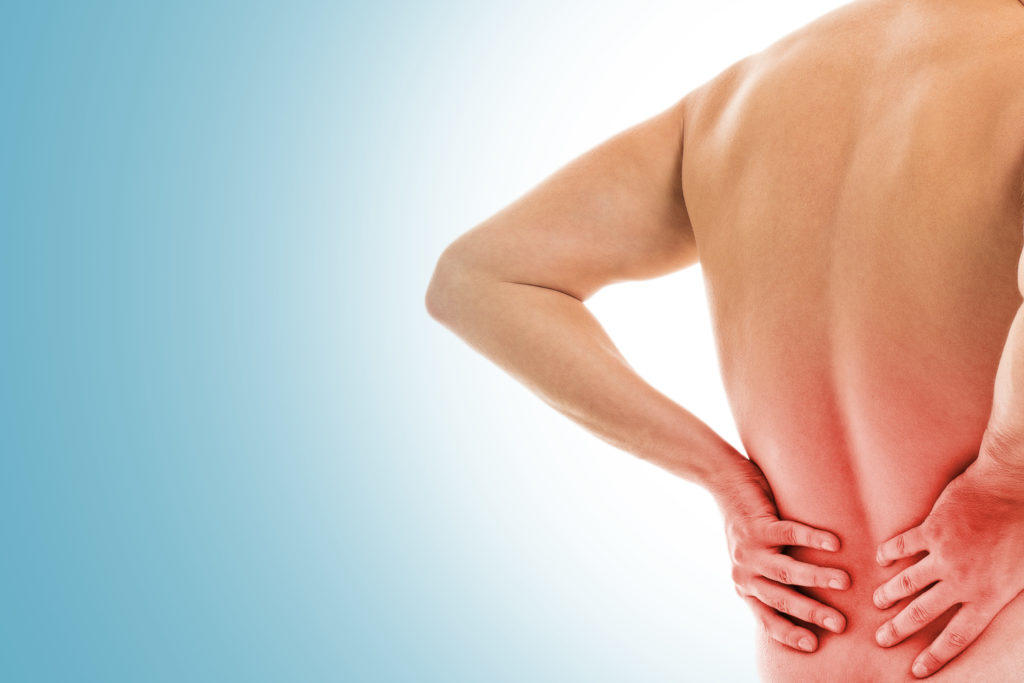This article is part of a series written by Dr. Kevin Pauza
It is a part of our normal aging process to develop degenerative disc disease. However, while for some this condition will go unnoticed, for others it will lead to painful and debilitating symptoms that may affect their quality of life.
There are also a variety of symptoms that are associated with degenerative disc disease because the spine is surrounded by nerves that serve many different parts of the body.
This is why degenerative disc disease pain is not only felt in the back but can also cause headaches, arm pain, and leg pain, depending on where the degenerative discs are located.
Symptoms of Degenerative Disc Disease
The symptoms of degenerative disc disease tend to be concentrated in the lower back and neck, but can occur anywhere there is degeneration. They include:
- Mild to severe pain
- Pain that radiates to the buttocks and thighs, as well as the arms and hands
- Pain that is worse when sitting, bending, lifting, or twisting
- Pain that is better when changing positions frequently
- Periods of varying pain, from a few days to a few months
- Numbness in the extremities
- Weakness in leg muscles or feet
- Muscle spasms or tension
- A feeling that your neck or back cannot support, loss of balance
One can see that there is a wide range of symptoms associated with degenerative disc disease, but are these symptoms really caused by this condition?
Degenerative Disc Disease Pain
When discussing degenerative disc disease, it’s important to keep in mind that this “disease” is actually just an appearance. More specifically, it’s the appearance of spinal discs that have accumulated multiple annular tears, causing the discs to leak and dry out, or desiccate.
Pain occurs because these annular tears allow the nucleus pulposus liquid gel to leak from the center of the spinal disc. This is because the nucleus pulposus is perceived as a foreign substance by the human body and the body reacts by causing inflammation. This inflammation causes pain.
This is why it’s possible for people to unknowingly have degenerative disc disease. If the spinal disc has no leakage, pain will not occur. This is why it’s important for physicians to pinpoint the underlying cause of a patient’s back or neck pain, rather than simply labeling it “degenerative disc disease pain.”
The Underlying Cause
In summary, degenerative disc disease is not a disease. it is the MRI appearance of a disc with multiple annular tears that cause discs to desiccate, flatten, bulge, or herniate.
Again, none of these appearances identify the cause of symptoms, because symptoms only originate from unseen leakage caused by annular tears.
However, these tears cannot be seen by MRIs or other imaging scans. Fortunately, annulogram tests can clearly see any and all tears in spinal discs, allowing them to be effectively treated.
This is why the Discseel® Procedure is the only cure for the debilitating conditions that annular tears can cause, like degenerative disc disease. It is the only procedure that includes an annulogram test, allowing your degenerated, pain-causing discs to easily be identified. After this, the Discseel® Procedure’s fibrin biologic is injected in the torn discs, sealing them to prevent further leakage.
However, the work of this fibrin doesn’t stop there. This natural biologic goes on to encourage the torn spinal discs to grow more tissue, preventing future tears.
If you’ve been living with pain that you believe to be caused by degenerative disc disease but have seen no improvement from other treatment options, you may be a candidate for the Discseel® Procedure. Apply today to take your first steps toward living a life without pain!
Header image attribution: People photo created by Racool_studio – www.freepik.com
